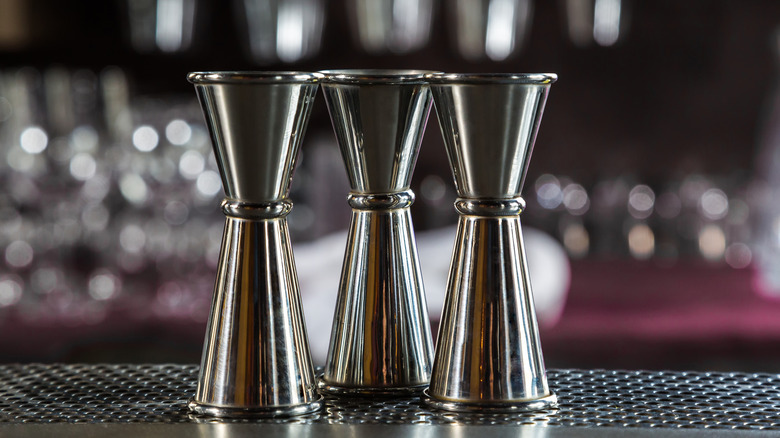Ever Wonder Why Most Cocktail Jiggers Are Hourglass-Shaped?
A cocktail jigger is an important tool in a bartender's drink-making arsenal for crafting tasty, elegant adult beverages. But have you ever wondered why it is shaped like an hourglass? The answer is pretty simple. It helps the bartender quickly measure, pour, and mix the alcohol with the other ingredients needed to make your favorite White Russian, cosmopolitan, margarita, or whatever liquid courage you might want to sip on.
This double-sided shot glass serves as a measuring cup for alcohol. While a jigger can come in various sizes, generally, the smaller side of this hourglass-shaped measuring shot — also affectionately referred to as a "pony shot"– holds ¾ ounce. In contrast, the larger shot measures 1½ ounces. Of course, if you find yourself in doubt as to what size your jigger is, you can take the guesswork out of the equation and look either on the inside or the outside of the cups for marked pour lines. But how do you pour quicker with this gadget? It's all in the wrist.
Mastering a jigger pour
This tool's ergonomic hourglass shape allows for a quick grab, flip, and pour. Jiggers give bartenders greater quality control when measuring cocktail ingredients, ensuring each cocktail has a consistent amount of alcohol and, therefore, a consistent taste. That said, it is important to master the jigger pour to get its full benefit. It is advised that you hold your jigger with just two fingers so when you turn it over to pour it into a cocktail shaker or glass; you just need to turn your wrist to empty it. Take care not to hold your jigger over your shaker or glass when you are pouring your alcohol; otherwise, if you dribble a little bit, you will end up with more alcohol than you want.
Jiggers come in all shapes and sizes and can be made of glass, metal, or plastic. While the hourglass-shaped version is the most common, you may find yourself using a bell jigger with rounded curves that make the two measuring shots look like bowls, or a Japanese jigger with a thinner diameter. As you learn to perfect your pour, you may need to experiment with a couple of variations to figure out which works best for your pouring talents.

